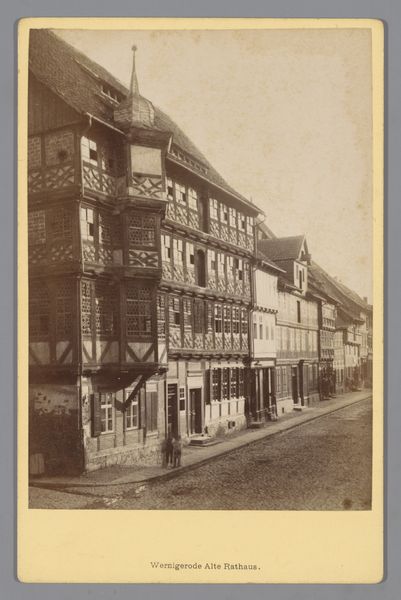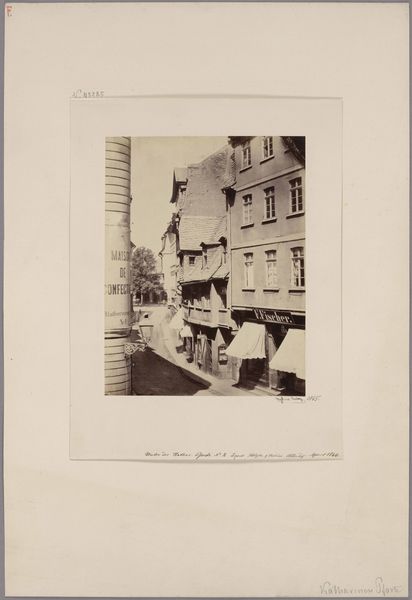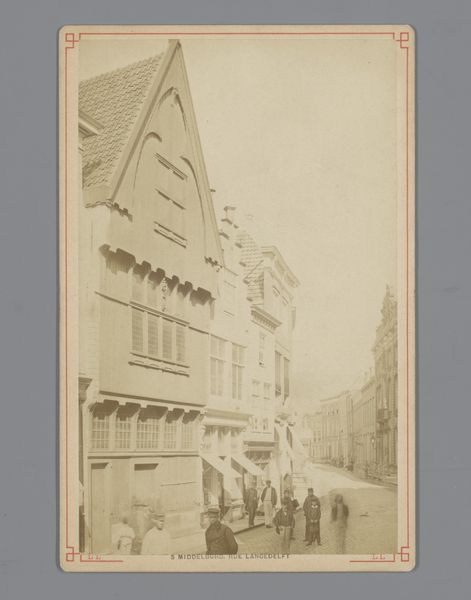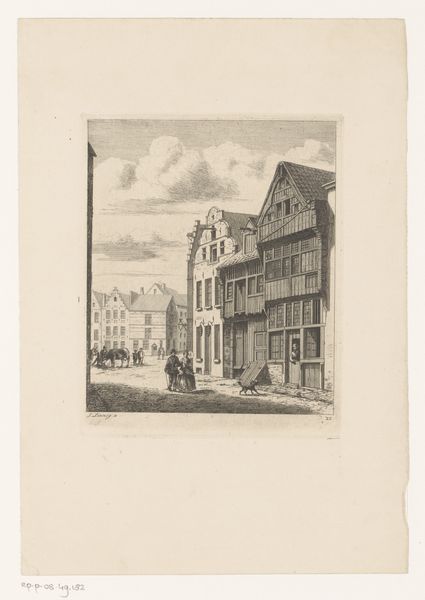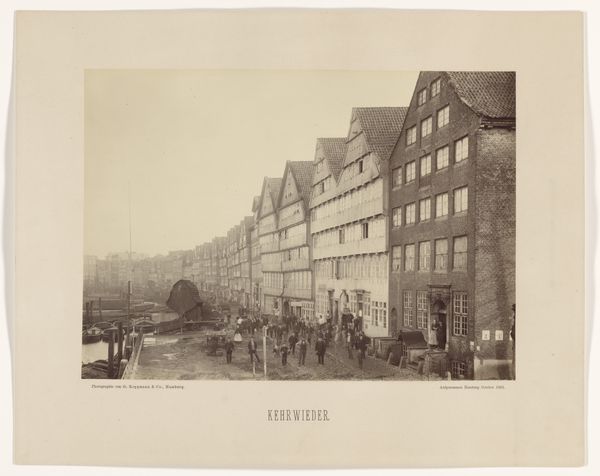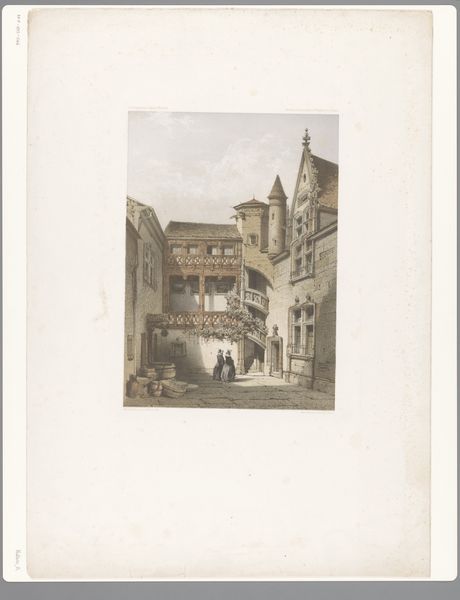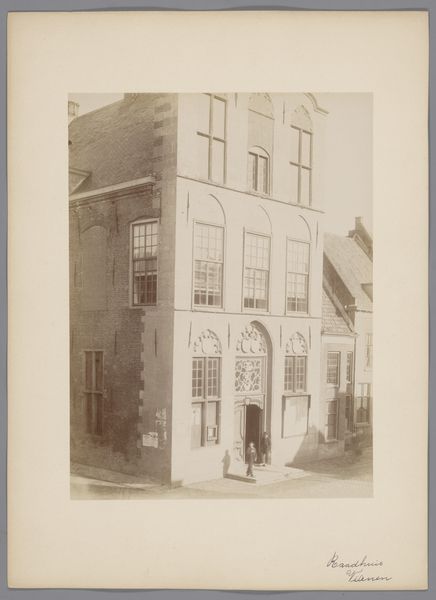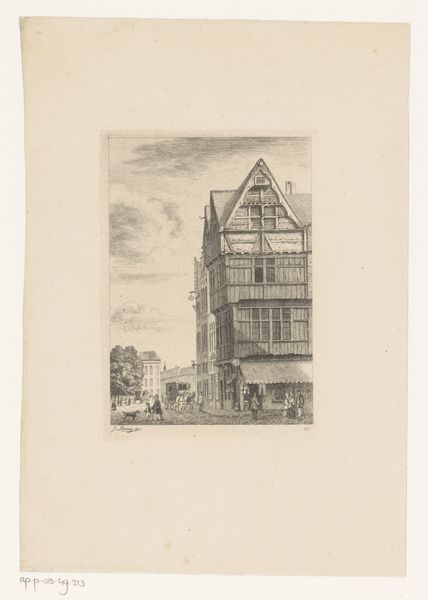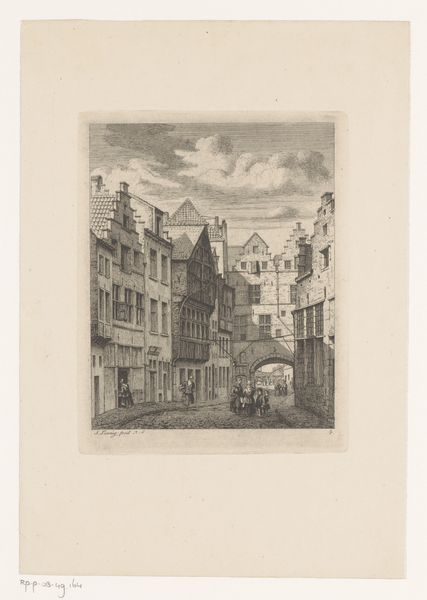
Copyright: Public Domain
Editor: This is Carl Friedrich Mylius's "Frankfurt am Main_ Grosse Eschenheimer Gasse," an albumen print from around 1860. It feels very still, almost dreamlike, but also documentary. What do you see in this piece? Curator: I see the weight of history. Photography, even then, wasn’t just capturing an image; it was preserving a cultural memory. These buildings aren't just brick and mortar. Notice how the people in the square seem almost ghostly? They represent a continuity of life, of commerce, that has persisted for centuries in that very spot. Editor: Ghostly is a good word. I hadn’t really considered the ephemeral nature of the figures against the presumed solidity of the architecture. Does that contrast suggest something about the transient nature of life? Curator: Absolutely. The photographer chose to capture both. The enduring architecture anchors us, while the figures suggest how quickly life changes. Observe the architectural details of each building; each tells its own story, its own time capsule. Do you recognize a possible psychological element, a tension, in holding onto what endures while acknowledging the march of time? Editor: I think so. There’s a kind of melancholic beauty in acknowledging both at once. It’s almost like the photograph is whispering secrets of generations past. Curator: Indeed. And that whispering – that resonance – is why these images still captivate us. They offer glimpses into not only a past reality but into enduring human experiences. Editor: That’s given me a new appreciation for it. It’s much more than just a pretty picture of an old street. Curator: Exactly. And now you hold a little piece of that history and its enduring cultural weight with you.
Comments
No comments
Be the first to comment and join the conversation on the ultimate creative platform.

